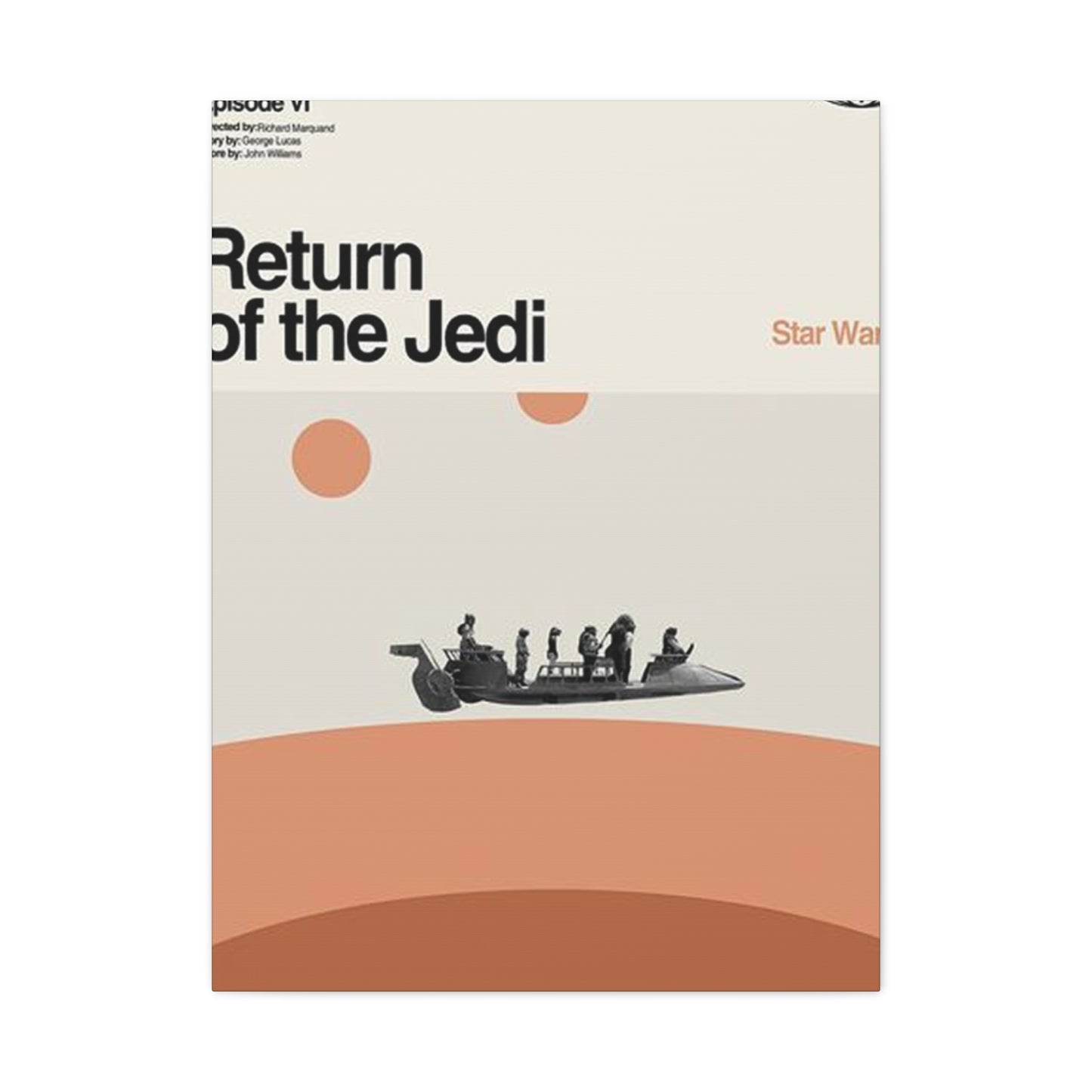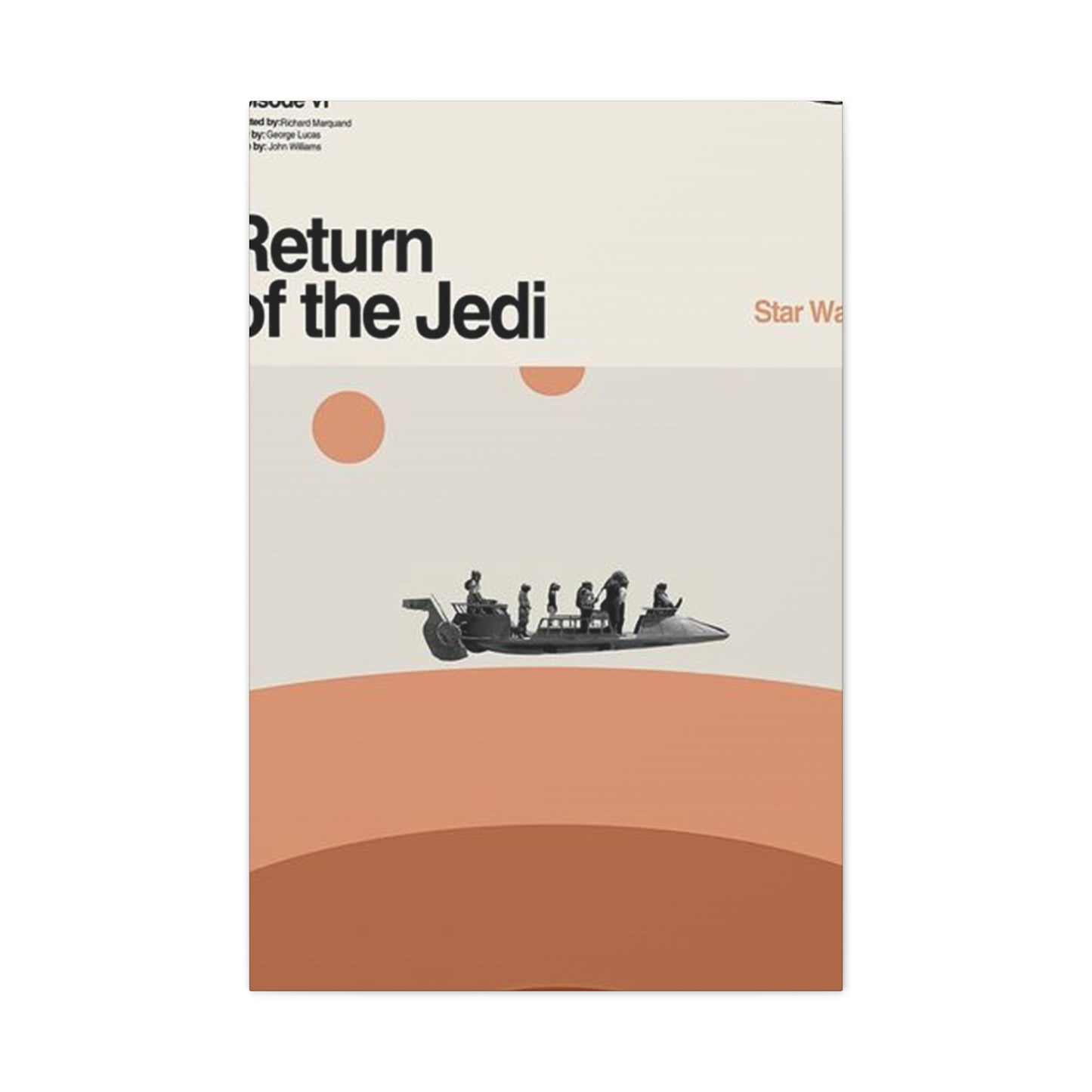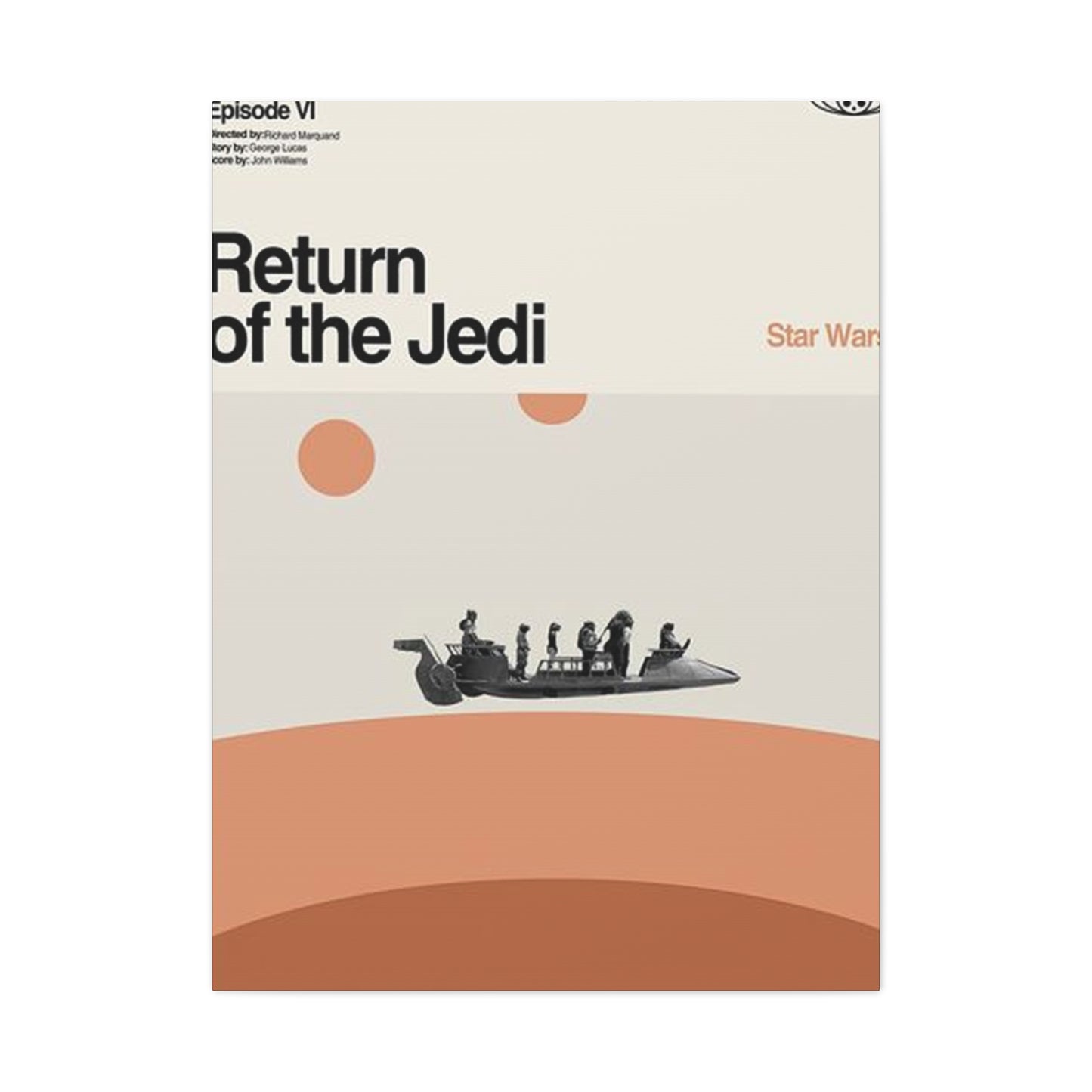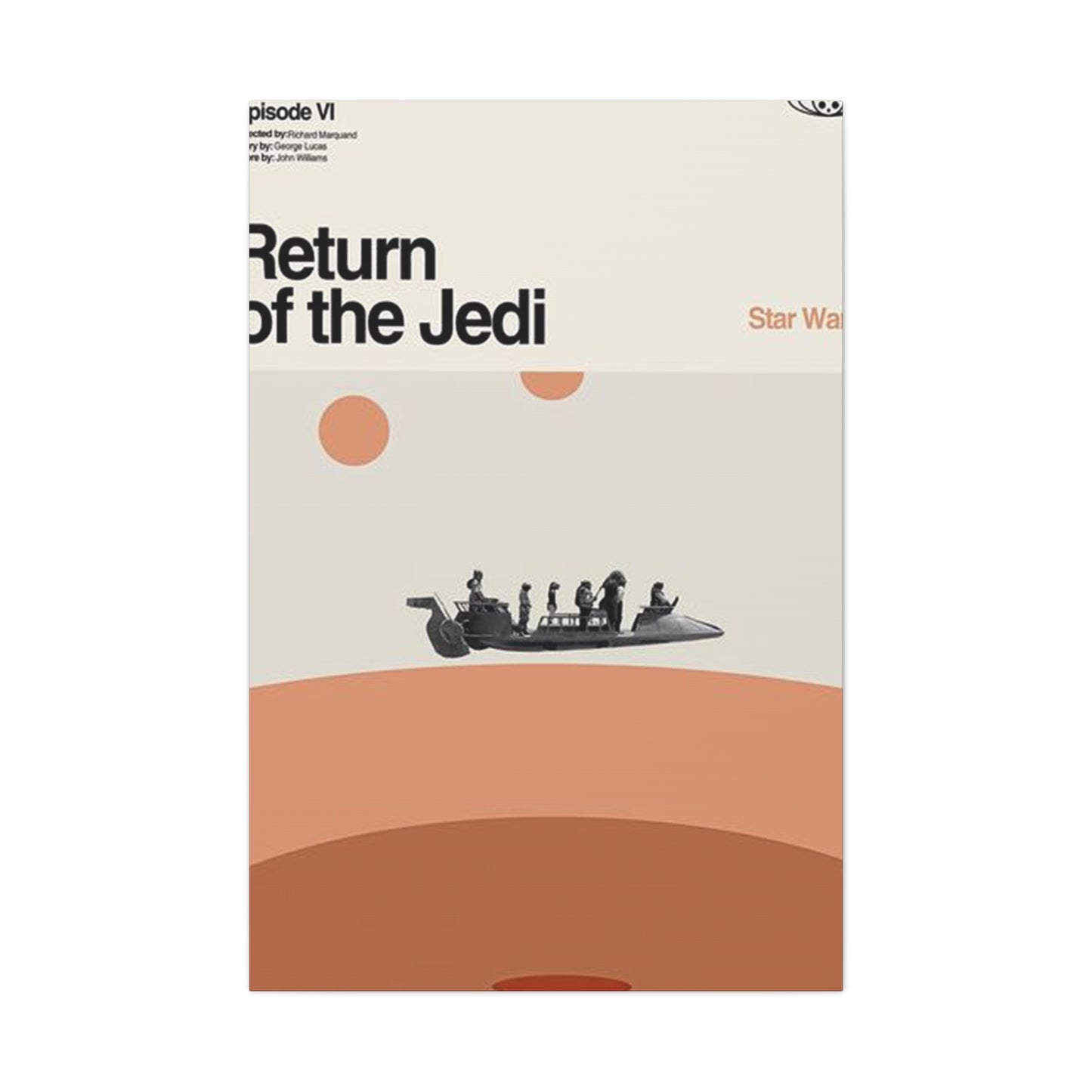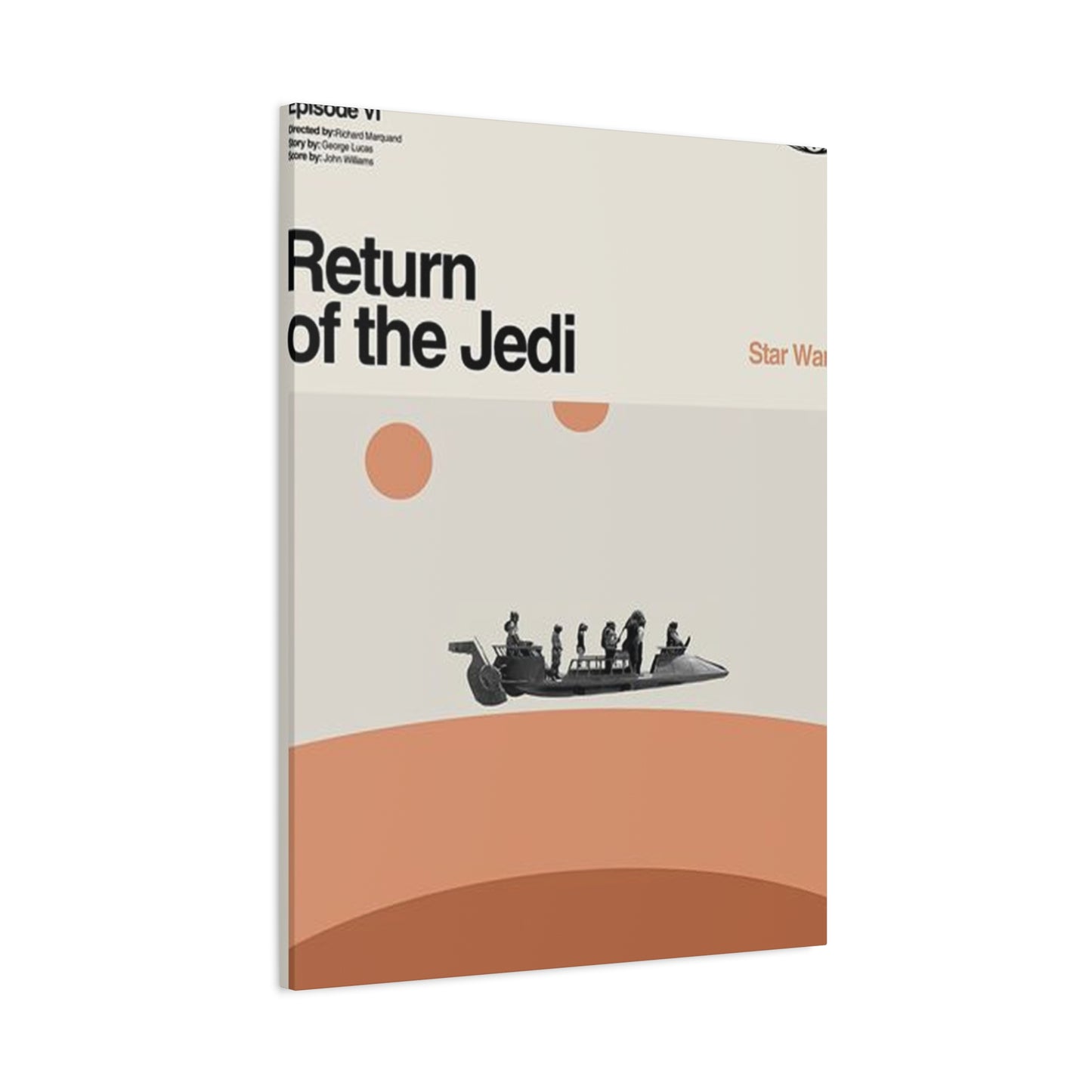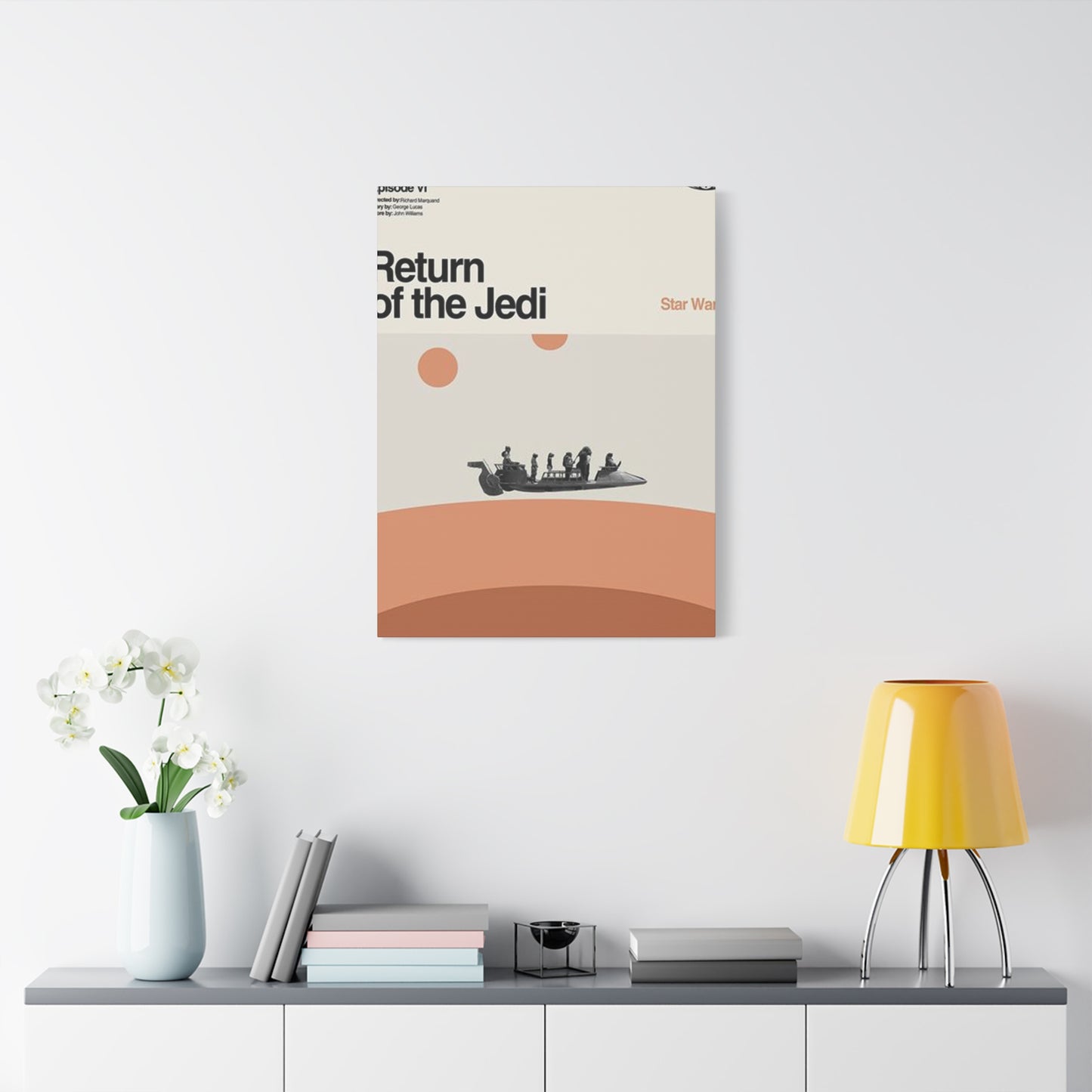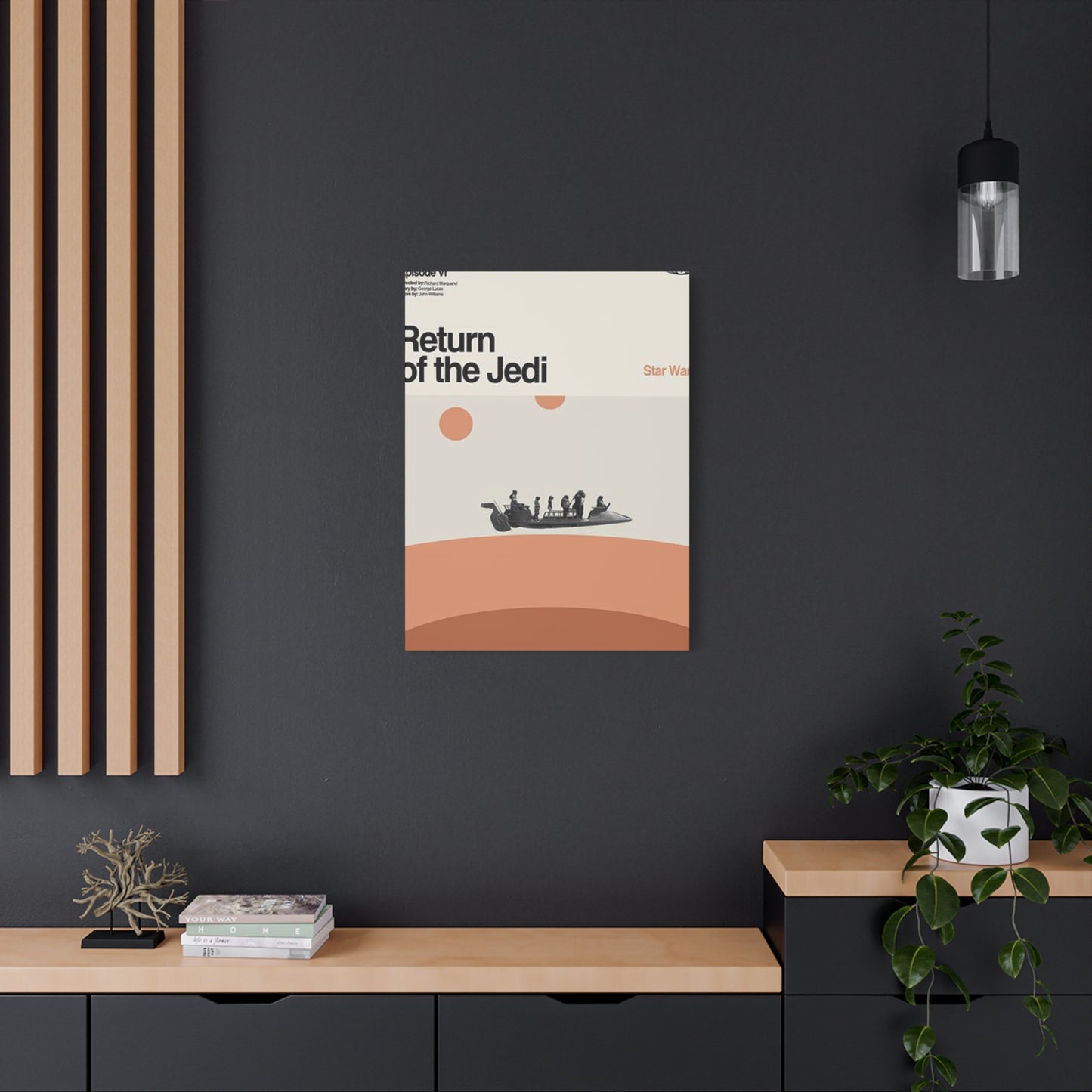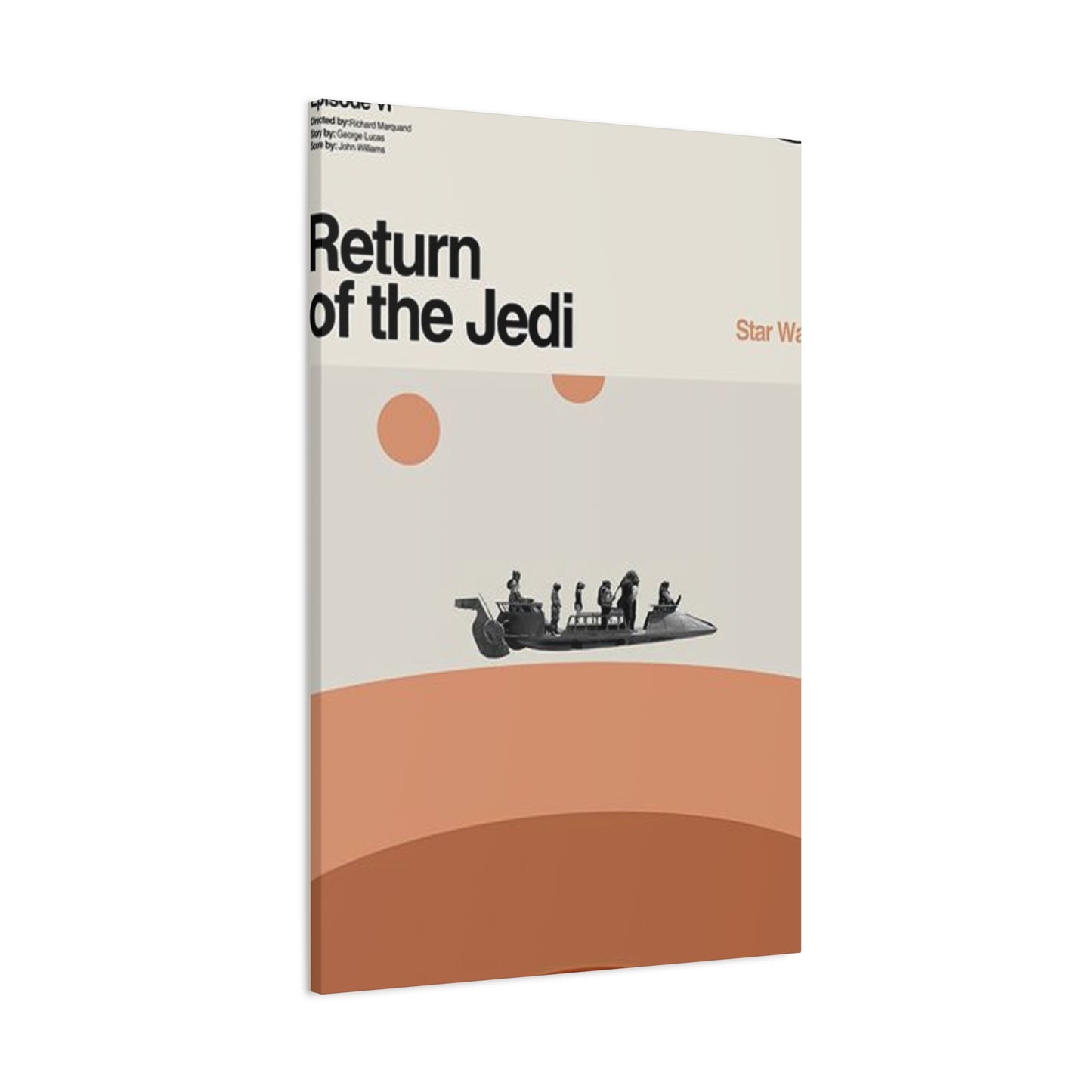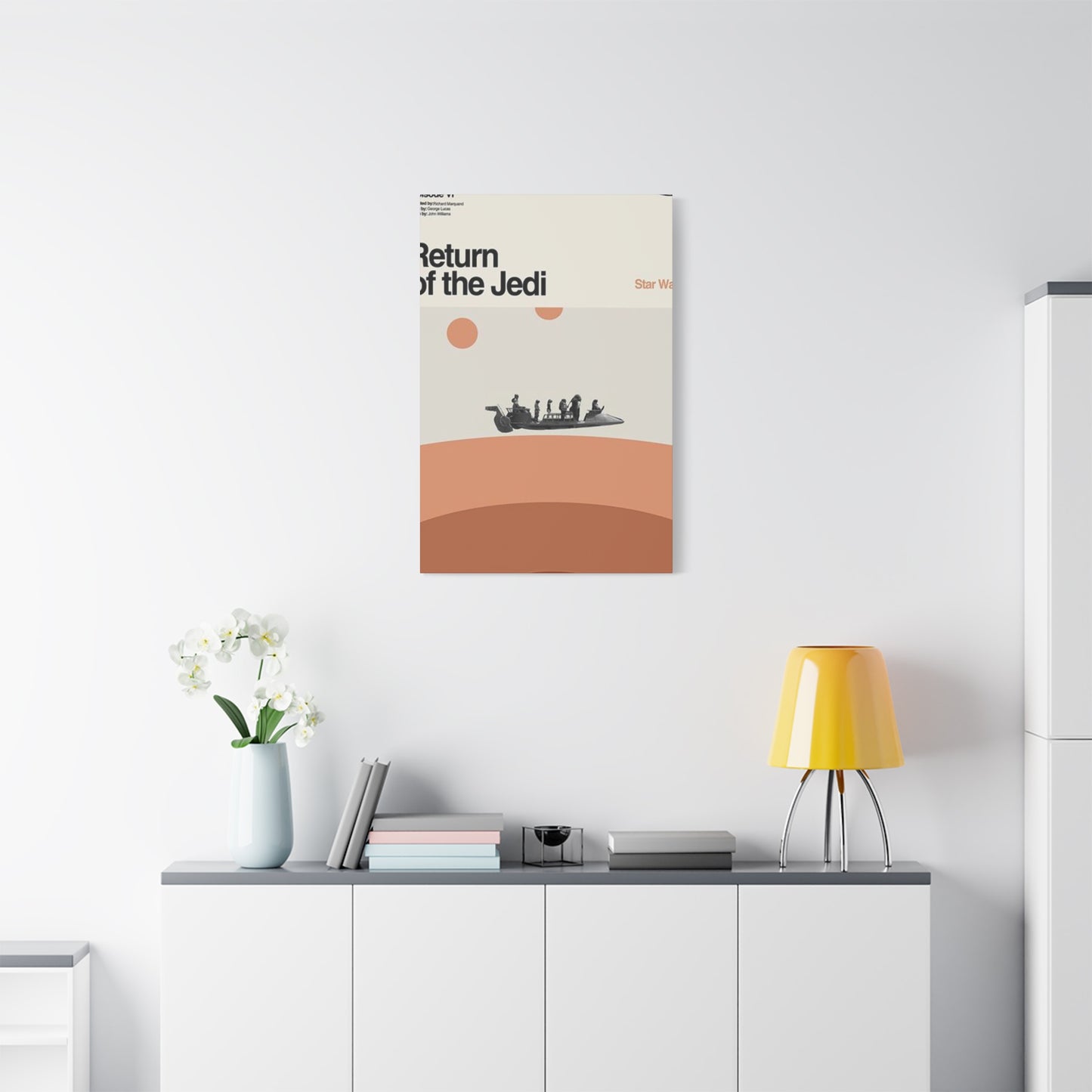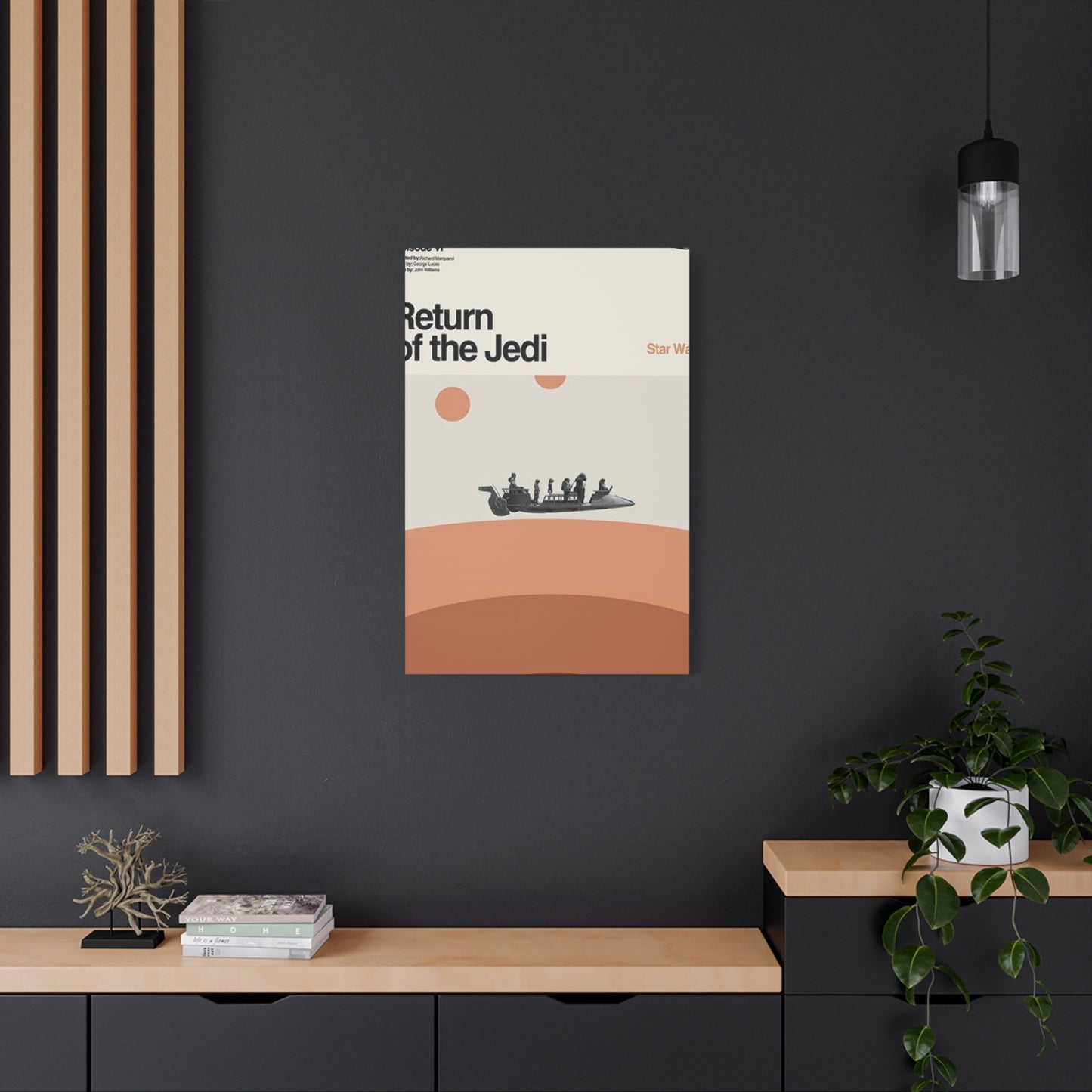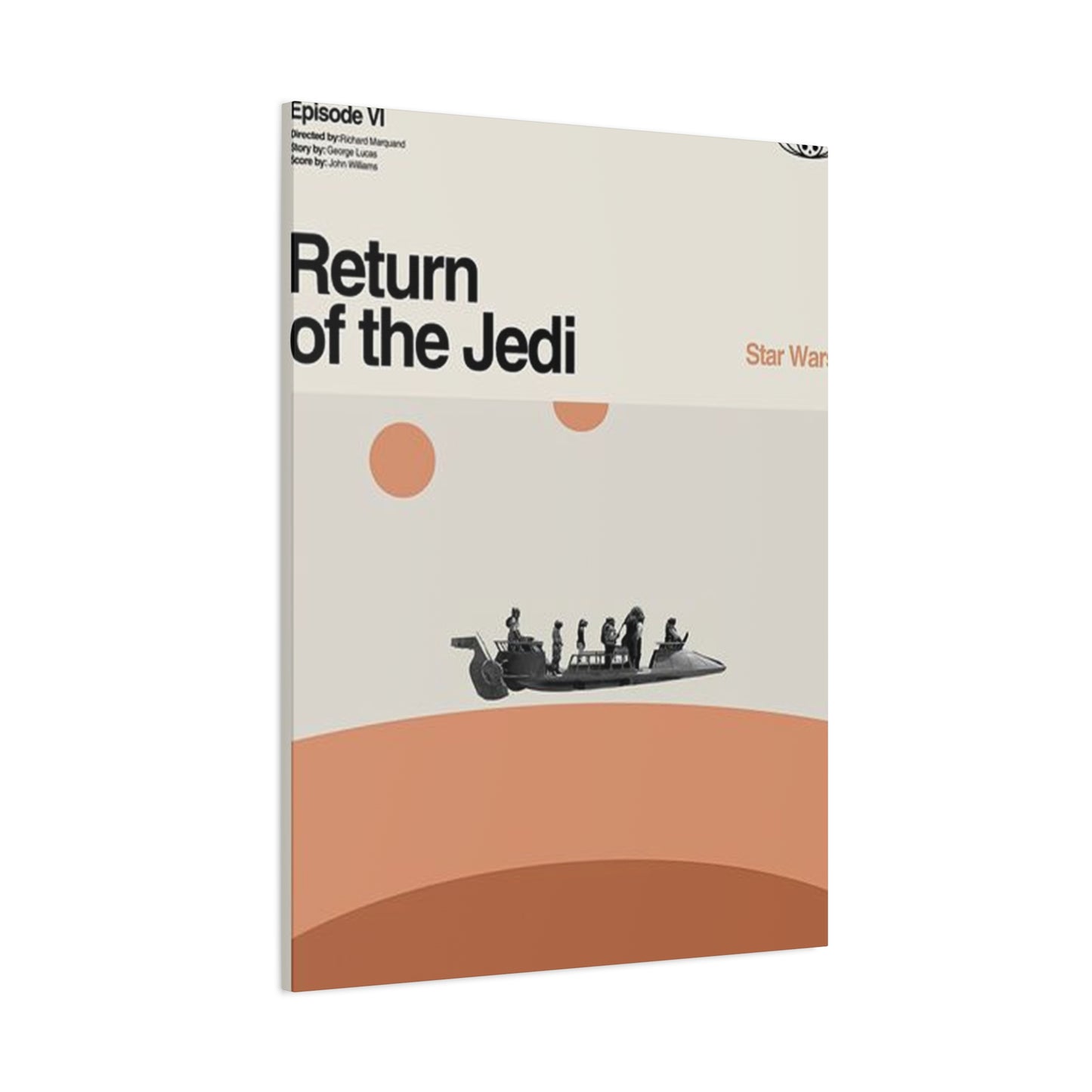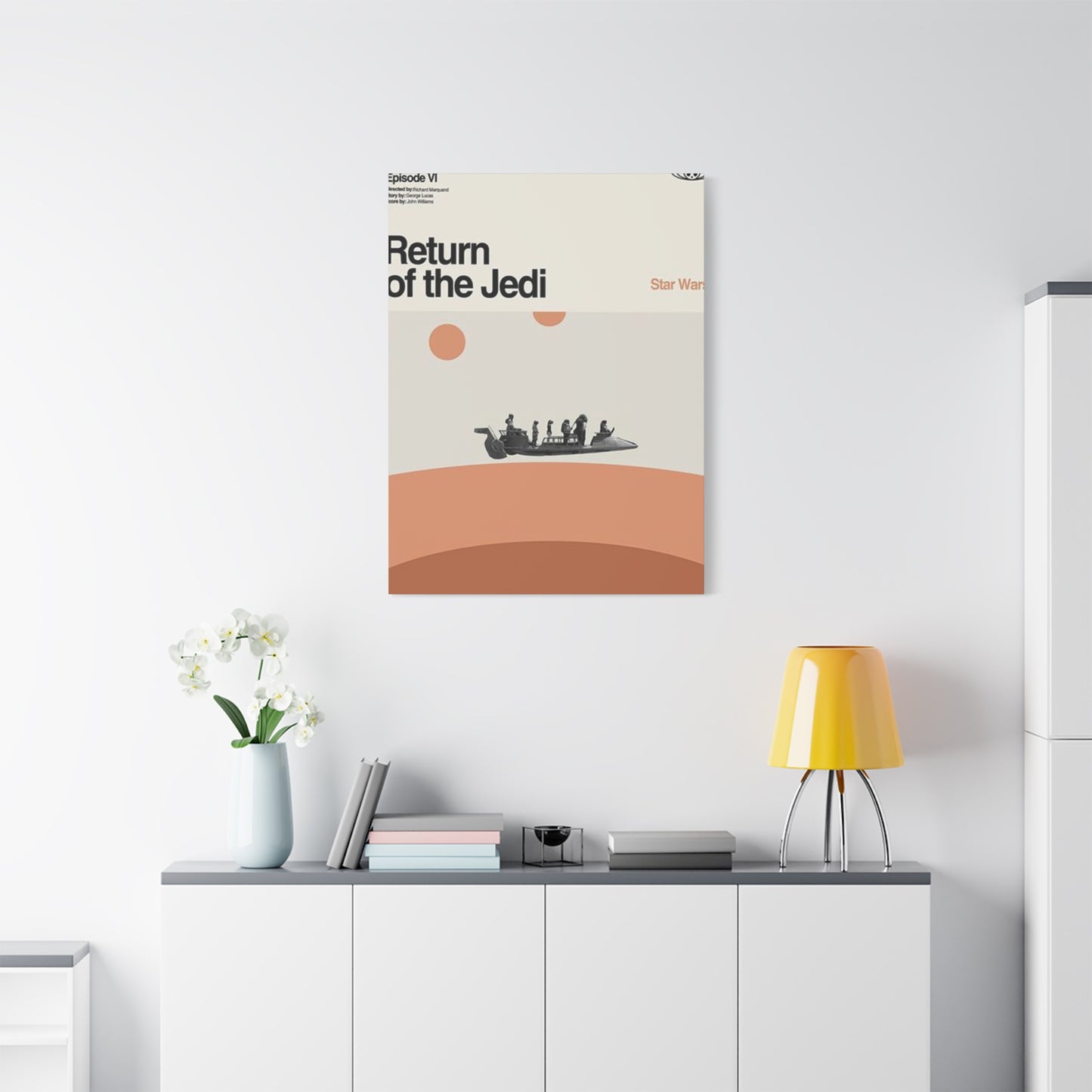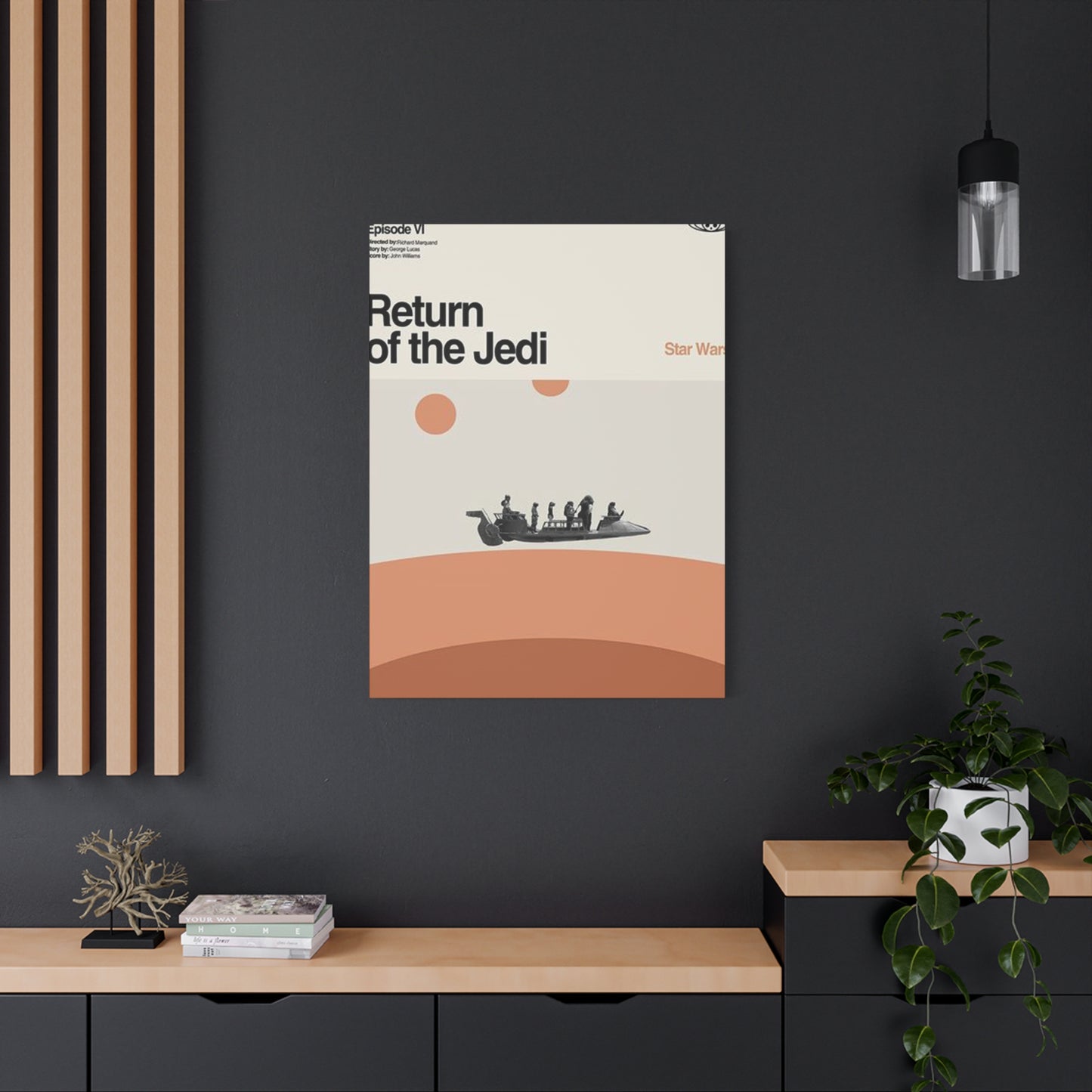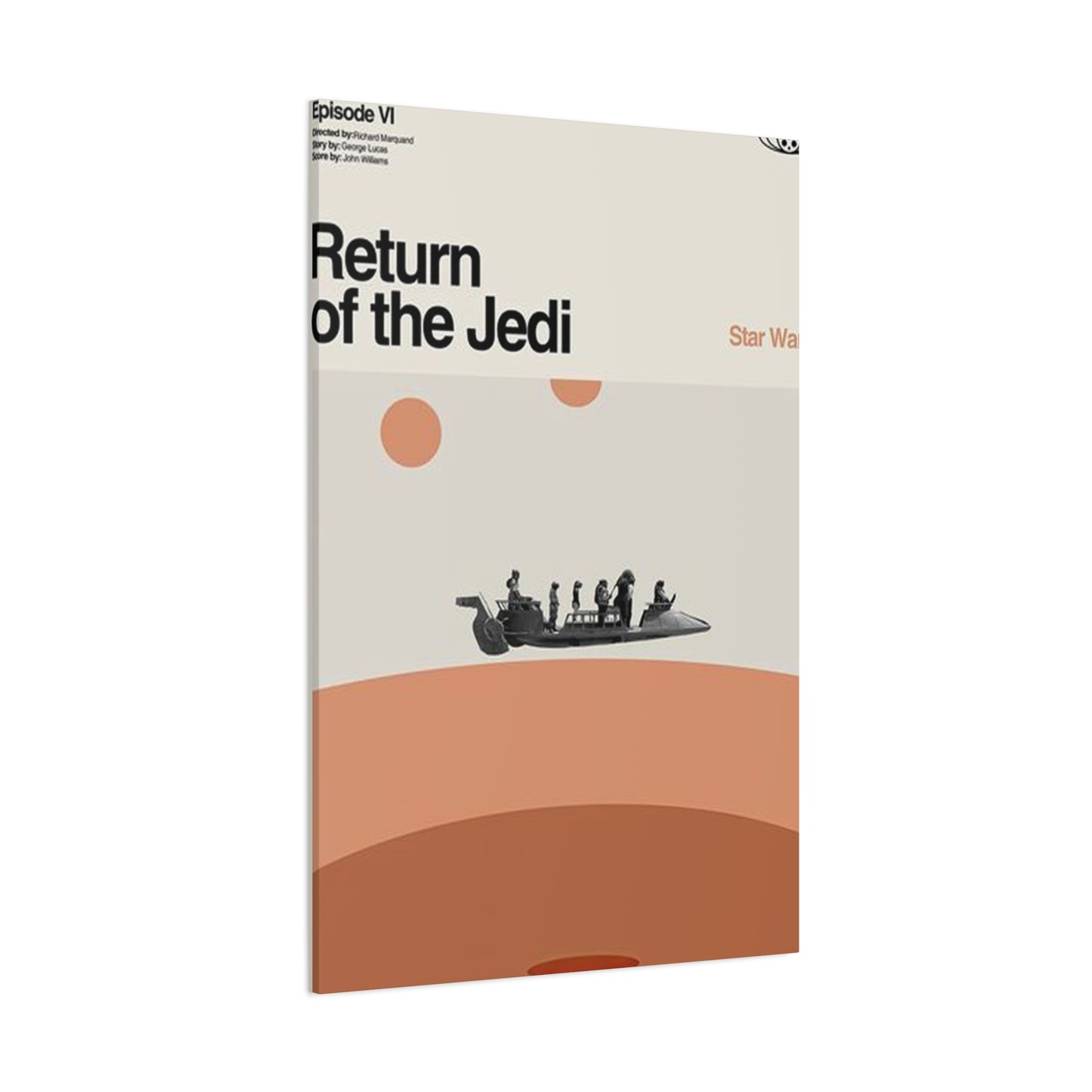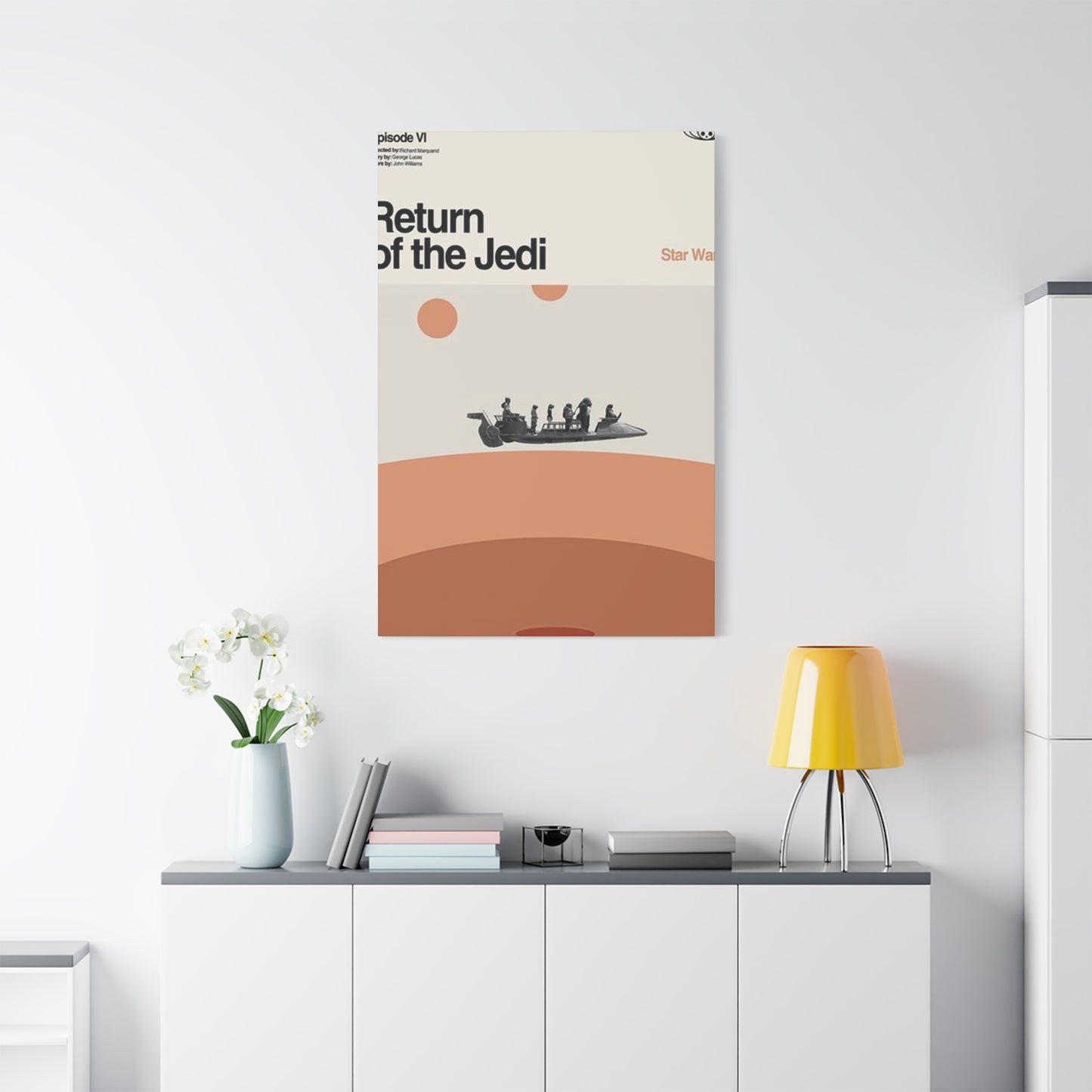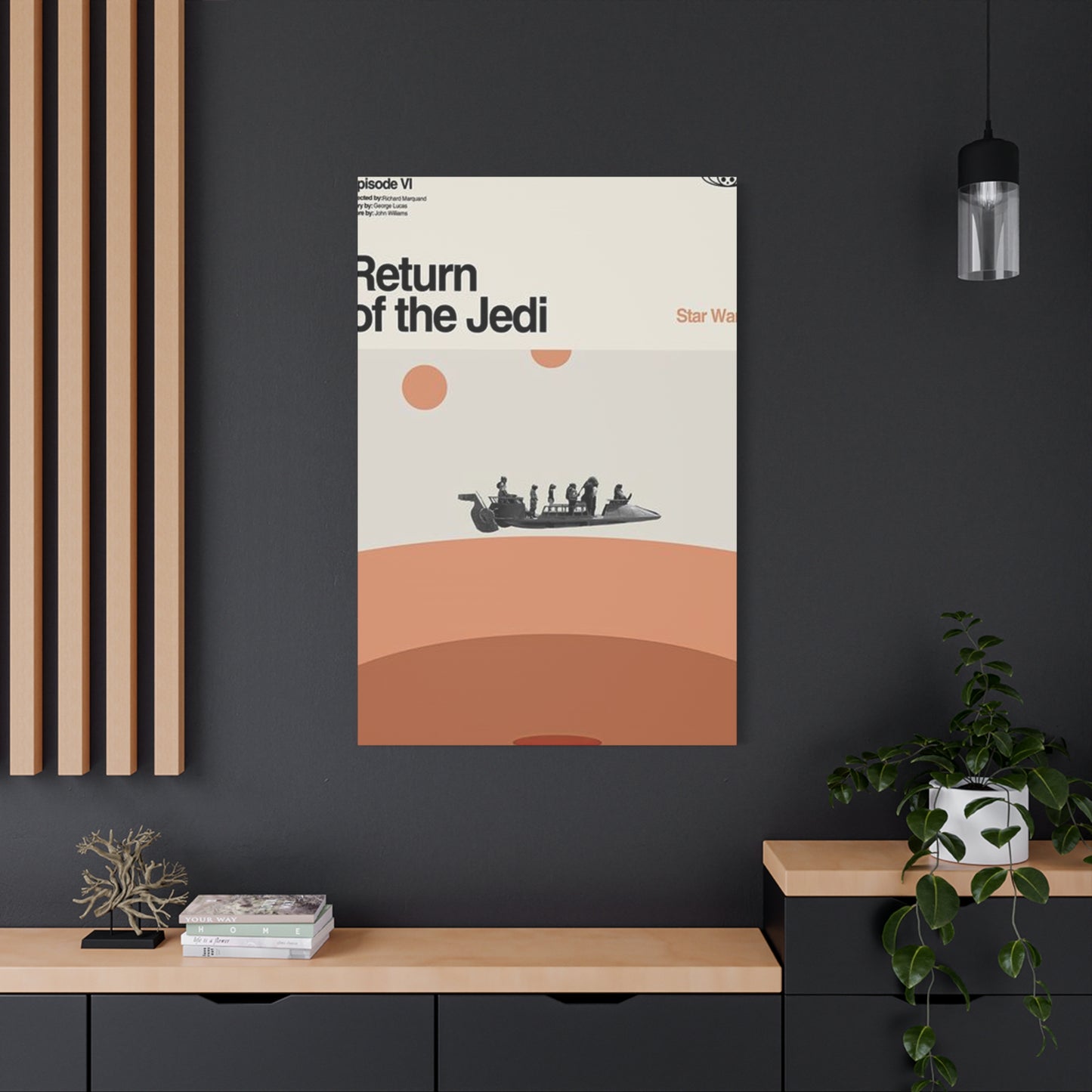Return of the Jedi Wall Art: Transform Your Environment with Iconic Star Wars
The final chapter of the original Star Wars trilogy continues to captivate audiences decades after its release, inspiring countless artistic interpretations that now grace the walls of homes, offices, and entertainment venues worldwide. Return of the Jedi wall art has become a cornerstone of fan culture, offering enthusiasts the opportunity to bring the epic conclusion of Luke Skywalker's journey into their daily lives through carefully curated visual displays.
This comprehensive exploration delves into the multifaceted world of Jedi-themed artwork, examining everything from iconic battle scenes to symbolic representations of the Force. Whether you're a longtime collector seeking to expand your gallery or a newcomer looking to incorporate galactic themes into your environment, understanding the breadth and depth of available options will help you make informed decisions that reflect your personal connection to this beloved saga.
The impact of Return of the Jedi extends far beyond its original theatrical release, permeating various art forms and inspiring countless interpretations that translate beautifully into wall-mounted displays. From minimalist representations of lightsaber duels to elaborate depictions of the Battle of Endor, artists have found numerous ways to capture the essence of this climactic film through canvas prints, posters, and custom artwork that resonates with fans across generations.
Legendary Battle Sequences Captured in Canvas Prints
The climactic confrontations that define Return of the Jedi have provided artists with rich source material for creating compelling wall displays. The throne room duel between Luke Skywalker, Darth Vader, and Emperor Palpatine represents one of the most emotionally charged sequences in cinema history, offering multiple perspectives for artistic interpretation.
Artists frequently focus on the dramatic lighting contrasts present in these scenes, utilizing deep purples and electric blues to represent the Emperor's Force lightning, while incorporating the classic red and green lightsaber colors that have become synonymous with the eternal struggle between good and evil. These compositions often feature dynamic poses that capture the intensity of combat while maintaining the mythological undertones that make Star Wars universally appealing.
The space battle above Endor provides another rich vein of artistic inspiration, with its sweeping starship formations and explosive encounters offering opportunities for both detailed technical illustrations and impressionistic interpretations. Many artists choose to highlight the Millennium Falcon's crucial role in the battle, creating compositions that emphasize movement and scale while celebrating the ingenuity of Rebel Alliance tactics.
Ground-based sequences on Endor have also inspired numerous artistic interpretations, particularly those featuring the unlikely alliance between Rebel forces and the native Ewok population. These scenes offer artists the chance to explore themes of cooperation and unity while incorporating the lush forest environments that provide such a striking contrast to the technological warfare occurring simultaneously in orbit.
The emotional weight of Vader's redemption sequence has spawned countless artistic tribulations, with many focusing on the moment of unmasking or the funeral pyre scene that closes the film. These interpretations often emphasize the human elements of the story, using lighting and composition to convey the complex emotions surrounding forgiveness, sacrifice, and the possibility of redemption even in the darkest circumstances.
Transforming Living Areas with Jedi-Themed Artwork
Incorporating Return of the Jedi prints into residential environments requires careful consideration of both aesthetic principles and personal preferences. The key lies in understanding how these powerful images can complement existing decor while creating focal points that enhance rather than overwhelm the overall ambiance of a room.
Living rooms benefit significantly from larger format prints that can serve as conversation starters while reflecting the homeowner's passion for the saga. Dramatic battle scenes work particularly well above sofas or entertainment centers, where their epic scale can be properly appreciated. The key is selecting pieces that maintain visual interest without becoming distracting during everyday activities like watching television or entertaining guests.
Bedroom applications often favor more subtle approaches, with many enthusiasts opting for character portraits or symbolic representations that maintain the connection to the saga without creating overly stimulating environments. Sunset scenes from Tatooine or peaceful moments between characters can provide the perfect balance between fandom expression and restful ambiance.
Hallways and transitional areas present unique opportunities for creating gallery-style displays featuring multiple smaller prints that tell a cohesive story. Sequential scenes from key moments in the film can create engaging visual narratives that reward closer inspection while guiding viewers through the progression of events that define the movie's emotional arc.
Home offices and study areas often benefit from inspirational imagery that incorporates themes of perseverance, wisdom, and personal growth. Yoda's teachings or Luke's journey toward becoming a Jedi Knight can provide daily motivation while maintaining a professional appearance that won't distract from work activities.
Children's rooms present special considerations, with many parents seeking artwork that captures the adventure and wonder of the saga while remaining age-appropriate. Ewok villages, droid adventures, and heroic moments without intense violence can help young fans connect with the positive messages embedded throughout the story.
Canvas Art Techniques and Visual Approaches
The diversity of artistic styles applied to Return of the Jedi themes reflects both the versatility of the source material and the creative vision of contemporary artists. Understanding these different approaches can help collectors make informed decisions about which pieces will best serve their intended purposes and personal aesthetic preferences.
Photorealistic interpretations focus on capturing the exact look and feel of scenes from the film, often incorporating precise details that would be recognized immediately by any fan. These pieces appeal to collectors who want to recreate the cinematic experience in their homes, providing visual references that maintain the authenticity of the original production design.
Impressionistic approaches take more creative liberties with color, form, and composition, using the emotional content of scenes as inspiration for artistic expression that may diverge significantly from the literal appearance of the source material. These pieces often emphasize mood and atmosphere over precise detail, creating artworks that capture the spirit of the saga rather than its exact visual representation.
Abstract interpretations push creative boundaries even further, using colors, shapes, and symbolic elements to evoke the themes and emotions associated with Return of the Jedi without necessarily depicting recognizable characters or scenes. These approaches can create sophisticated artworks that appeal to viewers who may not immediately recognize the Star Wars connection while still resonating with fans who understand the underlying references.
Pop art influences have created numerous colorful, stylized interpretations that emphasize the iconic status of Return of the Jedi characters and imagery. These pieces often feature bold color schemes and simplified forms that make strong visual statements while celebrating the cultural impact of the saga in contemporary artistic contexts.
Traditional artistic techniques applied to futuristic subject matter create interesting juxtapositions that highlight the timeless themes embedded within the science fiction framework. Oil paintings that treat lightsaber duels with the same reverence as classical mythology, or watercolor interpretations of spacecraft battles that emphasize beauty over violence, demonstrate the universal appeal of these stories.
Establishing Galactic Themes Throughout Your Environment
Creating cohesive Star Wars-themed environments requires thoughtful planning and careful attention to how individual pieces interact with each other and their surroundings. The goal is to establish a unified aesthetic that celebrates the saga while maintaining visual harmony throughout the designated area.
Color coordination plays a crucial role in successful theme development, with many collectors focusing on specific palette ranges that appear throughout the films. The warm orange and blue tones of Tatooine sunsets can provide a foundation for entire room schemes, while the cool blues and purples associated with lightsaber combat can create more dramatic atmospheric effects.
Scale relationships between different pieces help establish visual hierarchy while preventing any single element from overwhelming the overall composition. Larger centerpiece works can anchor entire walls, while smaller supporting pieces fill in details and provide opportunities for closer inspection and appreciation.
Lighting considerations become particularly important when displaying Star Wars artwork, as many scenes from Return of the Jedi feature dramatic illumination effects that can be enhanced or diminished depending on how they're presented. Strategic placement of accent lighting can bring out details in darker scenes while preventing glare on pieces that feature bright, reflective elements.
The integration of three-dimensional elements alongside flat artwork can add depth and interest to themed displays. Model spacecraft, replica lightsabers, or sculptural pieces can provide textural variety while reinforcing the technological aspects of the saga that complement the more traditional artistic interpretations.
Seasonal rotation of artwork allows collectors to highlight different aspects of their collections while preventing visual fatigue that can result from unchanged displays. The complex narrative structure of Return of the Jedi provides numerous thematic possibilities that can be emphasized at different times throughout the year.
Historical Development of Jedi Artistic Representation
The artistic interpretation of Jedi themes has evolved significantly since the original release of Return of the Jedi, reflecting changes in both artistic techniques and cultural understanding of the saga's deeper meanings. This evolution provides insight into how enduring narratives continue to inspire new creative expressions across different generations of artists.
Early artistic interpretations focused heavily on action sequences and dramatic moments, reflecting the immediate impact of the film's spectacular visual effects and emotional climaxes. These pieces often emphasized the technical aspects of the production while capturing the sense of wonder and excitement that defined the original audience experience.
As the cultural significance of Star Wars became more apparent, artists began exploring the philosophical and spiritual themes embedded within the narrative. The concept of the Force, in particular, has inspired numerous abstract and symbolic interpretations that go beyond literal representations of characters and events to explore deeper questions about balance, destiny, and personal transformation.
The expansion of the Star Wars universe through subsequent films, television shows, and literature has provided artists with additional context and inspiration for their Return of the Jedi interpretations. Characters and concepts that were introduced briefly in the original film have been developed more fully in later works, providing new perspectives on familiar scenes and relationships.
Digital art techniques have revolutionized the creation and distribution of Star Wars-themed artwork, allowing artists to achieve levels of detail and visual effects that would have been impossible with traditional media. These technological advances have democratized art creation while enabling new forms of artistic expression that complement rather than replace traditional techniques.
The global reach of Star Wars has resulted in artistic interpretations that incorporate diverse cultural perspectives and artistic traditions. Japanese manga influences, European painting traditions, and contemporary street art techniques have all been applied to Return of the Jedi themes, creating a rich tapestry of visual interpretations that reflect the universal appeal of these stories.
Sourcing Authentic and High-Quality Artwork
The popularity of Return of the Jedi artwork has created a vast marketplace where quality and authenticity can vary dramatically. Understanding how to identify legitimate sources and evaluate artwork quality ensures that collectors invest in pieces that will provide lasting satisfaction and maintain their value over time.
Licensed artwork represents the gold standard for collectors seeking official interpretations of Return of the Jedi themes. These pieces have been approved by the rights holders and often feature superior reproduction quality, archival materials, and limited edition numbering that can enhance their collectible value. However, licensing arrangements can also limit artistic expression and creativity.
Independent artist interpretations offer unique perspectives and creative approaches that may not be available through official channels. These pieces can provide more personal and innovative takes on familiar themes while supporting individual artists who bring their own vision and expertise to the subject matter. The challenge lies in identifying talented artists whose work meets professional quality standards.
Print quality considerations become crucial when evaluating potential purchases, as even exceptional artwork can be undermined by poor reproduction techniques or substandard materials. Giclee printing on archival papers or canvas provides the best longevity and color accuracy, while cheaper reproduction methods may fade or deteriorate relatively quickly.
Edition sizes and numbering affect both the exclusivity and potential investment value of artwork purchases. Limited editions with smaller print runs typically command higher prices but may also retain their value better over time. However, the artistic merit of the work itself should always be the primary consideration rather than purely speculative investment potential.
Artist reputation and portfolio review help collectors make informed decisions about purchases while supporting creators whose work demonstrates consistent quality and creative vision. Many artists specialize in science fiction or pop culture themes, developing expertise that results in more nuanced and sophisticated interpretations of Return of the Jedi subject matter.
Professional Framing and Presentation Techniques
The presentation of Return of the Jedi artwork can significantly impact both its visual appeal and long-term preservation. Professional framing techniques protect valuable pieces while enhancing their aesthetic impact and integration with surrounding decor elements.
Matting choices affect both the visual presentation and conservation aspects of framed artwork. Acid-free materials prevent chemical reactions that could damage prints over time, while color selections can enhance or complement the artwork's palette. The width and style of mats also influence how the piece interacts with its frame and surrounding wall area.
Frame selection should balance aesthetic preferences with practical considerations such as artwork protection and display location requirements. Traditional wooden frames complement classical artistic approaches, while contemporary metal or acrylic frames can enhance modern interpretations. The frame should support rather than compete with the artwork itself.
Glass versus acrylic glazing presents different advantages and drawbacks that affect both protection and viewing experience. Museum-quality glazing reduces reflections and filters harmful UV light that can cause fading, while standard options may be more cost-effective for less valuable pieces or temporary displays.
Mounting techniques vary depending on the artwork format and conservation requirements. Prints on paper require different approaches than canvas pieces, and valuable originals demand museum-quality mounting materials and techniques that allow for future removal without damage.
Environmental considerations such as humidity, temperature fluctuations, and direct sunlight exposure can significantly impact artwork longevity. Proper placement and climate control help preserve both the artistic and financial value of Return of the Jedi collections while ensuring continued enjoyment for years to come.
Workplace Integration of Jedi-Themed Artwork
Professional environments present unique challenges and opportunities for incorporating Return of the Jedi artwork that reflects personal interests while maintaining appropriate workplace aesthetics. The key lies in selecting pieces that demonstrate sophistication and artistic merit while subtly expressing individual personality and interests.
Executive office environments often benefit from more subtle approaches that incorporate Star Wars themes through artistic interpretation rather than obvious character representations. Abstract pieces that evoke the philosophical aspects of the saga or landscape-inspired works that reference alien worlds can provide personal satisfaction while maintaining professional credibility.
Collaborative workplaces and creative industries may welcome more obvious Star Wars references, particularly pieces that emphasize themes of innovation, teamwork, and overcoming challenges. The heroic journey narrative embedded in Return of the Jedi resonates with many business contexts while providing conversation starters that can facilitate relationship building among colleagues.
Home office situations offer the greatest flexibility for personal expression, allowing for more comprehensive displays that might include character portraits, battle scenes, and thematic groupings that would be inappropriate in traditional corporate environments. These displays can provide motivation and inspiration during long work sessions while creating environments that reflect individual passions and interests.
Meeting room and conference area artwork should focus on themes that support productive collaboration and positive communication. Images that emphasize unity, wisdom, and successful problem-solving can reinforce desired behavioral patterns while adding visual interest to otherwise sterile corporate environments.
Reception and public area displays require careful consideration of audience diversity and potential cultural sensitivities. Pieces that focus on universal themes such as good versus evil, personal growth, and the triumph of hope over adversity can appeal to broad audiences while avoiding imagery that might be considered too specific or exclusionary.
Realistic versus Stylized Artistic Interpretations
The spectrum of artistic approaches to Return of the Jedi themes ranges from photorealistic reproductions that capture exact cinematic moments to highly stylized interpretations that use the source material as inspiration for entirely original creative expressions. Understanding these different approaches helps collectors identify pieces that align with their aesthetic preferences and intended use.
Photorealistic artwork appeals to collectors who want to recreate the cinematic experience in their homes or offices. These pieces often focus on capturing exact lighting, costume details, and facial expressions that would be immediately recognizable to any fan of the film. The technical skill required to achieve this level of accuracy often commands premium prices while providing artwork that serves as visual references for specific movie moments.
Stylized interpretations offer artists greater creative freedom while potentially appealing to broader audiences who may appreciate the artistic merit even without deep knowledge of the source material. These approaches might simplify forms, exaggerate certain elements, or incorporate artistic techniques that create visual interest beyond simple reproduction of cinematic imagery.
Caricature and cartoon-style interpretations can add humor and accessibility to Return of the Jedi themes while maintaining recognizable character elements. These approaches often work well in casual environments or children's areas where the goal is entertainment and engagement rather than serious artistic contemplation.
Minimalist approaches strip away unnecessary details to focus on essential elements that capture the spirit of scenes or characters through simplified compositions. These pieces often work well in contemporary environments where clean lines and uncluttered aesthetics are preferred over busy or detailed imagery.
Mixed media approaches combine different artistic techniques and materials to create unique interpretations that might incorporate painted elements alongside photographic components, textural additions, or three-dimensional features that extend beyond traditional flat artwork presentations.
Creative Projects and Personalized Artwork Solutions
Many Return of the Jedi enthusiasts choose to create their own artwork rather than purchasing existing pieces, allowing for completely personalized expressions that reflect individual connections to the saga while developing artistic skills and creative satisfaction through hands-on projects.
Digital art creation has become increasingly accessible through sophisticated software applications that allow hobbyists to create professional-quality artwork using computers and graphics tablets. These tools enable experimentation with different styles and techniques while providing unlimited opportunities for revision and refinement without the material costs associated with traditional media.
Traditional painting and drawing techniques offer tactile experiences and unique aesthetic qualities that cannot be replicated through digital means. Oils, watercolors, acrylics, and drawing media each provide different expressive possibilities while connecting artists to centuries-old artistic traditions that can add depth and authenticity to personal creations.
Collage and mixed media approaches allow for incorporation of existing materials such as movie posters, action figure photography, or found objects that relate to Star Wars themes. These techniques can create highly personal artworks that incorporate elements of individual collecting histories while developing new artistic expressions.
Photography projects might focus on recreating scenes using action figures, costumes, or miniatures, potentially incorporating dramatic lighting and post-processing techniques to achieve cinematic effects. These approaches can provide affordable alternatives to purchasing artwork while developing technical skills and creative vision.
Custom commissioning from professional artists allows collectors to obtain unique pieces that incorporate specific requirements, personal elements, or artistic styles that may not be available through existing artwork offerings. This approach typically requires larger investments but results in completely original pieces tailored to individual preferences and specifications.
Motivational and Inspirational Applications
The themes embedded within Return of the Jedi provide rich material for artwork that serves motivational and inspirational purposes, helping viewers connect with positive messages about perseverance, personal growth, and the triumph of good over evil in their daily lives.
Luke Skywalker's journey from farm boy to Jedi Knight represents one of the most compelling personal transformation narratives in popular culture, offering numerous opportunities for artistic interpretation that emphasizes themes of self-improvement, dedication, and the realization of potential through commitment and training.
Yoda's wisdom teachings have inspired countless artistic interpretations that focus on philosophical and spiritual growth rather than action or conflict. These pieces often work well in study areas, meditation spaces, or anywhere that contemplation and reflection are valued over stimulation and excitement.
The redemption of Darth Vader provides powerful imagery related to forgiveness, second chances, and the possibility of positive change even in seemingly hopeless circumstances. These themes resonate with viewers facing personal challenges while offering hope and encouragement through visual representation of transformation and renewal.
The Rebellion's ultimate victory over the Empire celebrates themes of persistence, cooperation, and the power of small groups to effect significant change through dedication and strategic thinking. These messages can provide motivation in both personal and professional contexts while inspiring continued effort toward worthy goals.
The balance between light and dark sides of the Force offers philosophical frameworks for understanding internal conflicts and moral decision-making processes. Artistic interpretations of these concepts can provide daily reminders about the importance of choosing positive paths while acknowledging the ongoing nature of these challenges.
Symbolic Elements and Force Representation in Visual Art
The concept of the Force as presented in Return of the Jedi has inspired numerous symbolic artistic interpretations that go beyond literal character representations to explore deeper spiritual and philosophical themes through visual metaphor and abstract expression.
Light and darkness contrasts provide fundamental symbolic elements that artists frequently employ to represent the eternal struggle between good and evil, knowledge and ignorance, or hope and despair. These visual metaphors translate effectively into artwork through color choices, composition techniques, and lighting effects that evoke emotional responses beyond simple aesthetic appreciation.
Circular and spiral motifs often appear in Force-related artwork, representing concepts of balance, cycles, and the interconnected nature of all things as described in Jedi philosophy. These geometric elements can create visually compelling compositions while conveying deeper meanings about unity and the cyclical nature of existence.
Natural elements such as trees, water, and celestial bodies frequently appear in Force-themed artwork, reflecting the connection between Jedi teachings and natural harmony. These elements can create peaceful, meditative atmospheres while reinforcing themes about finding wisdom through observation of natural patterns and processes.
Energy and movement representations attempt to visualize the invisible Force through artistic techniques that suggest power, flow, and connection between different elements within compositions. These approaches often rely on dynamic lines, color gradients, and compositional movement to create visual representations of spiritual concepts.
Transformation imagery captures moments of change and growth that define character development throughout Return of the Jedi, particularly focusing on Luke's maturation and Vader's redemption. These artistic interpretations often emphasize transition states and evolutionary processes that reflect personal development themes.
Curating Collections with Multiple Star Wars Elements
Many collectors choose to incorporate Return of the Jedi artwork within broader Star Wars collections that span all films, television shows, and expanded universe materials. Creating cohesive displays that honor the entire saga while highlighting specific elements requires careful planning and artistic sensibility.
Chronological arrangements allow viewers to experience the narrative progression of the entire saga while identifying how artistic interpretations have evolved alongside the expanding universe. Return of the Jedi pieces within these arrangements often serve as emotional climaxes that resolve tensions established in earlier segments.
Thematic groupings focus on specific concepts such as lightsaber combat, space battles, or character relationships that appear throughout multiple films. Return of the Jedi contributes unique elements to these themes while connecting with similar content from other installments to create comprehensive explorations of recurring motifs.
Character evolution displays trace the development of specific individuals throughout their appearances across multiple films, with Return of the Jedi often providing resolution or transformation moments that complete character arcs initiated in earlier installments. These arrangements can create powerful narratives about growth, change, and destiny.
Artistic style comparisons allow collectors to explore how different artists approach similar subject matter, with Return of the Jedi scenes serving as common reference points that highlight individual creative interpretations while maintaining connection to shared source material.
Environmental and location-based groupings might focus on specific planets, ships, or architectural elements that appear throughout the saga, with Return of the Jedi contributing unique locations such as Endor forests, Jabba's palace, or the second Death Star that expand the visual vocabulary of the Star Wars universe.
Historical versus Contemporary Artistic Approaches
The artistic interpretation of Return of the Jedi themes reflects broader trends in both pop culture art and general artistic movements, creating interesting contrasts between traditional approaches and contemporary techniques that highlight changing cultural perspectives on the saga's enduring themes.
Vintage poster art and promotional materials from the original release period represent historical documents that capture the immediate cultural impact of Return of the Jedi while demonstrating commercial art techniques of the early 1980s. These pieces often feature bold, simplified compositions designed for maximum visual impact and easy reproduction.
Contemporary digital art techniques allow for levels of detail and visual effects that were impossible when the film was originally released, creating new possibilities for artistic interpretation that can enhance or completely reimagine familiar scenes through modern technological capabilities and aesthetic sensibilities.
Street art and graffiti influences have produced numerous contemporary interpretations of Return of the Jedi themes that incorporate urban aesthetic elements and social commentary alongside traditional fan appreciation. These approaches often challenge conventional presentation methods while maintaining strong connections to the underlying source material.
Fine art gallery approaches treat Star Wars themes with the same seriousness and technical sophistication typically reserved for more traditional subjects, elevating pop culture content through classical artistic techniques and presentation methods that emphasize artistic merit over commercial appeal.
Retro revival movements have created new artwork that deliberately mimics historical aesthetic approaches while incorporating contemporary understanding of the saga's cultural significance. These pieces often combine nostalgic appeal with modern production quality to create artwork that honors both past and present perspectives.
Thoughtful Gift Selection and Presentation
Return of the Jedi artwork makes meaningful gifts for fans of all ages, but selecting appropriate pieces requires understanding the recipient's specific interests, aesthetic preferences, and intended display options. Thoughtful consideration of these factors ensures that gifts provide lasting satisfaction rather than creating storage or display challenges.
Age-appropriate selections vary significantly depending on the recipient's maturity level and interests. Young children might appreciate colorful, action-oriented pieces featuring droids or Ewoks, while teenagers might prefer character portraits or dramatic battle scenes that reflect their developing sense of identity and adventure.
Personal interest assessment helps gift-givers identify which characters, themes, or artistic styles most appeal to specific recipients. Some fans gravitate toward heroic imagery and inspirational themes, while others prefer technical subjects such as spacecraft designs or architectural elements from the film.
Display consideration requires understanding where recipients might want to hang or display artwork, taking into account existing decor, available wall area, and personal privacy preferences. Pieces intended for public areas require different approaches than those meant for private bedrooms or personal offices.
Budget-appropriate options range from affordable prints suitable for casual gift-giving to investment-quality originals or limited editions that represent significant purchases. Understanding the relationship between gift-giver and recipient helps determine appropriate spending levels while ensuring that gifts feel meaningful rather than burdensome.
Presentation enhancement through professional framing, custom matting, or special packaging can elevate even modest artwork gifts into memorable presentations that demonstrate care and thoughtfulness beyond the simple selection of appropriate imagery.
Establishing Themed Environments with Jedi Artwork
Creating immersive environments that celebrate Return of the Jedi requires careful coordination of multiple elements including artwork, lighting, furniture selection, and color schemes that work together to establish cohesive themes while maintaining functional living or working areas.
Lighting design plays a crucial role in themed environment creation, with many enthusiasts incorporating colored lighting effects that reference lightsaber colors or dramatic scenes from the film. These lighting choices can enhance artwork displays while creating atmospheric effects that transport viewers into the Star Wars universe.
Furniture and accessory coordination helps establish thematic continuity while ensuring that environments remain practical for daily use. Simple color coordination with artwork palettes can create subtle connections, while more obvious thematic elements such as replica props or themed furniture can strengthen overall environmental impact.
Sound integration through background music or ambient effects can enhance the emotional impact of visual displays while creating multi-sensory experiences that more fully immerse visitors in themed environments. However, these audio elements must be carefully balanced to avoid becoming distracting or overwhelming.
Spatial organization affects how viewers experience themed environments, with careful attention to sight lines, focal points, and traffic flow patterns helping to guide attention and create desired emotional responses. Strategic placement of key artwork pieces can serve as anchor points that organize entire rooms around specific themes or narratives.
Seasonal adaptation allows themed environments to evolve over time, preventing visual fatigue while highlighting different aspects of Return of the Jedi themes throughout the year. This approach keeps displays fresh and engaging while accommodating changing personal interests and external circumstances.
Cultural Impact and Artistic Legacy
Return of the Jedi's influence on popular culture extends far beyond its original cinematic presentation, inspiring numerous artistic movements and creative expressions that continue to evolve decades after the film's initial release. Understanding this broader cultural context helps collectors appreciate the significance of their artwork choices while connecting with larger conversations about art, entertainment, and cultural meaning.
Academic recognition of Star Wars as legitimate cultural phenomenon has led to scholarly analysis and artistic interpretation that treats the saga's themes and imagery with the same seriousness typically reserved for classical literature or historical events. This elevated status has influenced how artists approach Return of the Jedi subject matter while expanding the potential audience for related artwork.
International perspectives on Star Wars themes have resulted in artistic interpretations that incorporate diverse cultural traditions and aesthetic approaches, creating globally influenced artwork that reflects the universal appeal of the saga's core messages while adding unique regional perspectives and artistic techniques.
Generational differences in artistic interpretation reflect changing cultural values and technological capabilities, with younger artists often incorporating contemporary social media aesthetics and digital techniques while older artists might focus on traditional approaches that connect with their original experience of the film's release.
Cross-media influences have resulted in artistic interpretations that incorporate elements from video games, animated series, novels, and other expanded universe materials alongside original film content. These influences create richer, more complex artistic works that reflect the entire cultural ecosystem surrounding Star Wars rather than limiting focus to single film elements.
Future development predictions suggest that Return of the Jedi artwork will continue evolving as new technologies enable innovative presentation methods and as cultural perspectives on the saga's themes continue developing through generational change and global cultural exchange.
Preservation and Care for Canvas Prints
Proper maintenance of Return of the Jedi artwork ensures that pieces retain their visual appeal and financial value over extended periods while preventing damage that could require expensive restoration or result in complete loss of cherished pieces.
Environmental control represents the most important factor in artwork preservation, with temperature and humidity fluctuations causing expansion and contraction that can damage both canvas and paint layers. Consistent environmental conditions prevent these physical stresses while reducing chemical reaction rates that can cause fading or deterioration over time.
Cleaning techniques vary depending on artwork materials and construction methods, with different approaches required for canvas prints, paper artwork, and framed pieces. Regular dusting prevents accumulation of particles that can cause abrasion or chemical damage, while deeper cleaning should be performed by conservation professionals to avoid inadvertent damage.
UV protection through specialized glazing or window treatments prevents light damage that can cause irreversible fading or color shifts in artwork. Even indoor lighting can contribute to cumulative damage over extended periods, making protective measures important for valuable pieces regardless of their display location.
Handling procedures affect artwork longevity, with proper techniques for moving, hanging, and adjusting pieces preventing mechanical damage that can occur through well-intentioned but inappropriate manipulation. Understanding proper support methods and avoiding direct contact with artwork surfaces helps maintain original condition.
Storage considerations become important for pieces that are not continuously displayed, with proper support, climate control, and protection from pests or accidents ensuring that artwork remains in good condition during periods of non-display while remaining accessible for future enjoyment.
Conclusion
The enduring appeal of Return of the Jedi wall art reflects the profound cultural impact of this concluding chapter in the original Star Wars trilogy, demonstrating how powerful narratives continue to inspire artistic expression and personal connection long after their initial presentation. From iconic battle sequences to subtle symbolic representations, the artistic interpretations of this beloved film offer countless opportunities for fans to incorporate meaningful visual elements into their daily environments while celebrating themes of heroism, redemption, and the eternal struggle between good and evil.
The diversity of available artistic approaches ensures that every collector can find pieces that resonate with their personal aesthetic preferences while reflecting their individual connection to the saga. Whether drawn to photorealistic reproductions that capture exact cinematic moments or preferring abstract interpretations that explore deeper philosophical themes, the breadth of available options accommodates every taste and budget while maintaining the emotional resonance that makes these artworks more than mere decorative elements.
Professional presentation through quality framing and thoughtful placement transforms Return of the Jedi artwork from simple fan memorabilia into sophisticated design elements that enhance any environment while expressing personal interests and values. The careful integration of these pieces with existing decor creates opportunities for meaningful conversation and personal reflection while adding visual interest and emotional depth to homes, offices, and public areas.
The investment potential of carefully selected Return of the Jedi artwork provides additional motivation for thoughtful collecting, with limited editions and original pieces often appreciating in value while providing ongoing aesthetic and emotional satisfaction. Understanding market dynamics and quality factors helps collectors make informed decisions that serve both their immediate enjoyment and long-term financial interests while supporting artists who continue developing innovative interpretations of these timeless themes.
As new generations discover Star Wars and existing fans deepen their appreciation for the saga's enduring messages, the market for Return of the Jedi wall art continues expanding and evolving. Contemporary artists bring fresh perspectives and modern techniques to familiar subjects while maintaining respect for the source material that has inspired decades of creative expression. This ongoing development ensures that collectors will continue finding new and exciting pieces that reflect both classic appeal and contemporary artistic innovation.
The educational value of Return of the Jedi artwork extends beyond simple entertainment, offering opportunities to explore themes of moral development, personal transformation, and the importance of hope in overcoming seemingly impossible challenges. These visual reminders of positive messages can provide daily inspiration and motivation while connecting viewers to larger conversations about ethics, spirituality, and human potential that remain relevant regardless of changing cultural circumstances.
The social aspects of collecting and displaying Return of the Jedi artwork create opportunities for connection with fellow fans while sharing appreciation for artistic excellence and meaningful storytelling. Whether through formal collecting communities or casual conversations with visitors who notice displayed pieces, these artworks serve as catalysts for relationships and discussions that enrich personal and professional life while celebrating shared interests and values.
The therapeutic benefits of engaging with uplifting imagery and positive themes cannot be underestimated, particularly in contemporary environments where stress and negativity often dominate daily experience. Return of the Jedi wall art offers visual respite and emotional support while reinforcing messages about persistence, courage, and the ultimate triumph of good over evil that provide psychological comfort and encouragement during challenging periods.
The customization possibilities available through commissioned work and personal creation projects allow collectors to develop completely unique pieces that reflect their specific connection to the saga while supporting individual artists and developing personal creative skills. These opportunities for active engagement transform passive consumption into creative participation while ensuring that resulting artworks carry deeper personal meaning and emotional significance.
Future developments in printing technology, artistic techniques, and presentation methods promise to expand the possibilities for Return of the Jedi wall art while maintaining the essential emotional and aesthetic qualities that make these pieces meaningful to collectors across diverse demographic groups. As virtual and augmented reality technologies mature, new forms of immersive artistic experience may complement traditional wall-mounted displays while preserving the fundamental appeal of visually celebrating these beloved stories and characters.
In conclusion, Return of the Jedi wall art represents far more than simple fandom expression, offering sophisticated artistic interpretations of timeless themes that continue resonating with audiences across generations and cultures. The careful selection, presentation, and care of these pieces creates opportunities for ongoing enjoyment while contributing to the preservation and celebration of one of cinema's most influential and beloved cultural phenomena. Whether serving as focal points in themed environments or subtle accents in traditional decor schemes, these artworks enrich daily life while maintaining connections to the universal messages of hope, growth, and redemption that define the enduring legacy of the Star Wars saga.

















